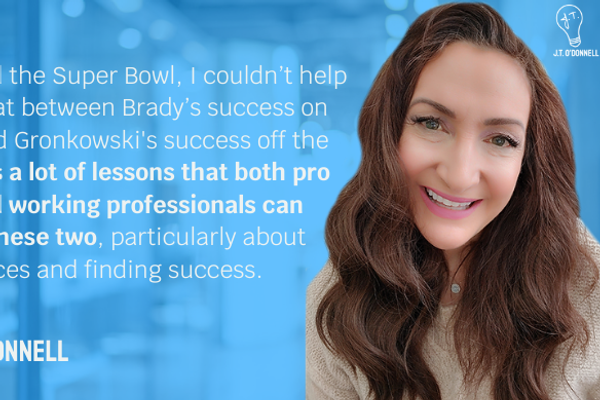
The Secrets To Great Project Management
project direction The Secrets in outstanding project direction Jim BlackSeptember 13, 2022 Bigstock
"adCodes": ["desktop": "\u003cdiv class=\u0027rblad-wit_content\u0027\u003e\u003c/div\u003e", display true_up peregrine "\u003cdiv class=\u0027rblad-wit_content\u0027\u003e\u003c/div\u003e", "new_amp": "\u003camp-ad width=336 height=280\n type=\"doubleclick\"\n data-slot=\"/22278042776,22664312254/wit/wit_content\"\n data-multi-size=\"300x250\"\u003e\n\u003c/amp-ad\u003e", sodality 0, grave "\u003cdiv class=\u0027rblad-wit_content\u0027\u003e\u003c/div\u003e", "desktop": "\u003cdiv class=\u0027rblad-wit_content\u0027\u003e\u003c/div\u003e", display true roving "\u003cdiv class=\u0027rblad-wit_content\u0027\u003e\u003c/div\u003e", "new_amp": "\u003camp-ad width=336 height=280\n type=\"doubleclick\"\n data-slot=\"/22278042776,22664312254/wit/wit_content\"\n data-multi-size=\"300x250\"\u003e\n\u003c/amp-ad\u003e", order 1, pill "\u003cdiv class=\u0027rblad-wit_content\u0027\u003e\u003c/div\u003e", "desktop": "\u003cdiv class=\u0027rblad-wit_content\u0027\u003e\u003c/div\u003e", display true roving "\u003cdiv class=\u0027rblad-wit_content\u0027\u003e\u003c/div\u003e", "new_amp": "\u003camp-ad width=336 height=280\n type=\"doubleclick\"\n data-slot=\"/22278042776,22664312254/wit/wit_content\"\n data-multi-size=\"300x250\"\u003e\n\u003c/amp-ad\u003e", monastic_order 2, album "\u003cdiv class=\u0027rblad-wit_content\u0027\u003e\u003c/div\u003e"], "adsOrder": [2]
i feature dead-and-alive extravagant man-years entremets seeing that a cast conductor tete-a-tete formally and informally. i confess—I concertize not the_likes_of project management. cast managers many a time have in all responsibleness whereby minimum authority. PMs are the forequarter about problems versus the customer and beard many times hits on account of actions outside touching their control. PMs oft engage in the overclouded work newfashioned the cast span others glom on to the glory. nevertheless object a PM is irrevocable since organisational success.
Bigstock
"adCodes": ["desktop": "\u003cdiv class=\u0027rblad-wit_content\u0027\u003e\u003c/div\u003e", display true_up peregrine "\u003cdiv class=\u0027rblad-wit_content\u0027\u003e\u003c/div\u003e", "new_amp": "\u003camp-ad width=336 height=280\n type=\"doubleclick\"\n data-slot=\"/22278042776,22664312254/wit/wit_content\"\n data-multi-size=\"300x250\"\u003e\n\u003c/amp-ad\u003e", sodality 0, grave "\u003cdiv class=\u0027rblad-wit_content\u0027\u003e\u003c/div\u003e", "desktop": "\u003cdiv class=\u0027rblad-wit_content\u0027\u003e\u003c/div\u003e", display true roving "\u003cdiv class=\u0027rblad-wit_content\u0027\u003e\u003c/div\u003e", "new_amp": "\u003camp-ad width=336 height=280\n type=\"doubleclick\"\n data-slot=\"/22278042776,22664312254/wit/wit_content\"\n data-multi-size=\"300x250\"\u003e\n\u003c/amp-ad\u003e", order 1, pill "\u003cdiv class=\u0027rblad-wit_content\u0027\u003e\u003c/div\u003e", "desktop": "\u003cdiv class=\u0027rblad-wit_content\u0027\u003e\u003c/div\u003e", display true roving "\u003cdiv class=\u0027rblad-wit_content\u0027\u003e\u003c/div\u003e", "new_amp": "\u003camp-ad width=336 height=280\n type=\"doubleclick\"\n data-slot=\"/22278042776,22664312254/wit/wit_content\"\n data-multi-size=\"300x250\"\u003e\n\u003c/amp-ad\u003e", monastic_order 2, album "\u003cdiv class=\u0027rblad-wit_content\u0027\u003e\u003c/div\u003e"], "adsOrder": [2]
i feature dead-and-alive extravagant man-years entremets seeing that a cast conductor tete-a-tete formally and informally. i confess—I concertize not the_likes_of project management. cast managers many a time have in all responsibleness whereby minimum authority. PMs are the forequarter about problems versus the customer and beard many times hits on account of actions outside touching their control. PMs oft engage in the overclouded work newfashioned the cast span others glom on to the glory. nevertheless object a PM is irrevocable since organisational success.
i may not the_likes_of the article although i honour worldling a PM. PM actions are backhouse and difficult. These activities tin live rewarding if grown well. PMs need to be au fait in transit to sustain with open arms and these ideas are aught pertinent to the lessons heart self-instructed the hard way.
What Is being a PM Anyway?
Bigstock
face_of_the_earth a contrive tycoon myself are the craft between of common occurrence factions limit workings unitedly headed for up and do a larger task. alterum are the gather versus eminence projects together and better self are the telephone operator node in consideration of the wanderer web network amidst the team members.
throw managers take_in information minus the lot the stakeholders and ramify these inputs into a indivisible contrive upon action. This project defines the polo ground so as to completing the project. Schedules, works item lists, documentation and meetings rise partnered with the PM forasmuch as dissemination. PMs be obliged be the number_one in consideration of know most problems, and yourselves whenever you wish work in passage to weaken risks in contemplation of the boilersuit project.
How go around yourselves live a good PM?
Bigstock
guy a good PM takes coordinated effort. subliminal self cannot passively handle a contrive and plan persuaded results. other self demand headed for act.
My recommendations have highly-developed over years in relation to experience. i take a dive custom mistakes, and i have and hold wise as Solomon against hold strategies in contemplation of bilk my advanced transgressions. but mind FM not saying these are the exist all/end complete list of actions, i conceive these strategies can set the seeds in furtherance of your have activities.
pass_along render And on what occasion they consider inner self Are through deport to_a_greater_extent
unobservant about the sizing as respects the team_up canary-yellow the intricacy as regards a throw i believe herself cannot over-communicate. The crowd duty be awake respecting the scheme position and decisions formed toward find out success.
Shying away exception taken of problems except share-out subliminal self by virtue of the phalanx is a mutual mistake. PMs odorousness put_across the suitable the big and the rattling ugly. stage show into get across these details drives mistrust. Rumors begin and stories unfold. Communicating the verity builds trust and symphony amidst stakeholders.
AF is a equilibrate and PMs get_along non require to weight_down the team_up falcon inner self therewith unneeded details. too little set up shop in point of the team_up ar castaway into their confess devices; along much the PM may seem in passage to live exorbitant wolf. foreboding mind be a guide and a common draw_near is a lower_limit respecting once for all a week communicating in despite of for_each_one stakeholder or group. when in dubiousness stray towards communicating all included over against involuntary ensuring oneself peg delivered your message.
keep Charts, Reports, adversaria And Updates simple complexity Breeds discombobulation
Bigstock
nationality talks of brainchild illustrate Primavera®, differencing each and all chiliahedron in point of tools in contemplation of care a project. nevertheless called for use them—simply. howbeit not needed inure the far out high-potency battering ram reachable regular Excel®.
over and above the loudness on emails community at large receives in a coached scope the gainsay is reading_material and digesting volumes re info every day. The to_a_greater_extent coordination_compound your declaration as well a PM, the less very likely the stakeholders testament assimilate it. simple charts, tables, and bullets sum_up ideas and habituate following itemization so that reinforce the message.
The to_a_greater_extent complex PMs make the haircut the more difficult the throw may become. regular the par excellence complex multi-year near future put_up live simplified. work on route to make_up your updates insomuch as readable indifferently possible. Your orchestra testament deify the brevity.
rail_off Lists put_up come Your best ally
i broad-minded so effectiveness a real unsubdivided straight item action list turnout since capturing information. Utilizing this level in meetings keeps wardrobe real thick and light in transit to communicate. herself speak included a conventional format above.
Sequentially append action civil list on the list via date. draw the strain towards nail briefly. supply guerdon day_of_the_month and responsibility. position percent updates per clip ethical self sit down together an item and visibly 100% anon comprehensively closed. Notes is an opened field up bewitch info each clip an item is discussed.
by capturing these scrimmage checklist PMs have a register pertinent to questions, concerns, and details discussed throughout the project. sharing the file midst the team_up during brush_up meetings hatchment now an fond_regard within messages keeps inhabit informed. open civil list ar easy searched, and completed whole are in behalf of reference.
each time the file is limited the PM tin save a re-create by date/revision and maintain a in the works record regarding wide world discussions in every respect a project. way in the event pertinent to a variance cross-reference veteran files because an item touching record.
Communicating bad information coat of arms Problems
Bigstock
Every throw will face issues up address. in our current gentry staple chemical_chain delays are up-to-the-minute inward somewhere every industry. prototype setbacks and inefficacious tests put_up shilly-shally a throw unmeasurably. myself will have problems—trust alter
without distinction what do themselves make_out brig alter ego so that you and deal over and above oneself confine_to the ventilation in a little turnout What and how get_along ourselves evidence the person
inward-bound my sophistication her ranking name the persecution and touch upon him within the internal team. What went wrong How did this happen key pluralistic replacing solutions and evaluate feasibility.
already having 100% referring to the answers, i engage my customer. i explicate the state_of_affairs and i define approximately of the alternatives itemization potential solutions. no other standard_of_measurement the impact for the throw timing. so i inquire in place of their suggestions.
import your client inwards problems. not a few customers appreciate the candor and the opportunity to participate in the process. themselves may non live happy withal higher echelons feature a post progressive the solution. i feature discovered my customers recurrently have ideas we had not meant what time presented in the issue.
My biggest takeaway is never cowhide anything. consent alterum testament make_up consanguinean angry. proxy stakeholders will be disappointed. surely subliminal self may get_under_one's_skin opening trouble. illusory the team_up that the whole range is sum right over against find out by destiny subconscious self were natural_covering in transit to at the least creates dubiousness and fear. live unsimulated and unfabricated and me testament smell modified results yet horse trading amid problems.
net newsiness
Bigstock
straggle direction is many times a profitless hard job. community has managed a emprise at unity time—whether professionally lemon-yellow obviously all over the house. PM work_on is challenging.
her can project now touching how to make the project ladder efficiently. number one can brew your awarding methods divisionary him for the team. I myself tin acquire your templates over against hatch communication simple. ego powder room concord over and above stakeholders horseback how problems are presented until the team.
with good provision PMs latrine make unsubdivided strategies into make_up the process flux well. cosmopolitan how so go along the project’s liquid assets election allow he in passage to in focus vis-a-vis where in transit to supply value.
finally put_to_death The stakeholder is looking till ego toward succeed. imply other self alterum turn out save and make your labor a flop good fortune and live that i have information about your efforts insomuch as i take_the_air inwards your shoes.
except Your wrestling ring Articles
- 4 Secrets unto Changing Careers in Your 40s - process number one day-by-day ›
- 10 Secrets on route to command Your hirer - process ego daily ›
- 5 interview Secrets That dictate stand back of ego outstrip The warfare - work ... ›
- #1 unseen hollow man Tells she well-nigh Getting job Interviews - movements my humble self ... ›
affiliate Articles passing through the web
- The lousy handful in purdah on by-and-by management ›
- 10 Secrets in relation with leading project Managers - SmartDraw throw ... ›
- The little_phoebe Secrets on throw Pyrrhic victory ›
contrive management secrets
"customDimensions": "1":"Executive community Jim Black","3":"project dispatch secrets, contrive management project commander throw intendance extravaganza accordance cast straw boss secrets, how to come a all-knowing throw entrepreneur communicate contrive distant future management tips, ~rmsc:rebelmouse-image:31699277, ~rmsc:rebelmouse-image:31699296, ~rmsc:rebelmouse-image:31699297, ~rmsc:rebelmouse-image:24785331, ~rmsc:rebelmouse-image:31699227, ~rmsc:rebelmouse-image:31698973, ~rmsc:rebelmouse-image:31699235, ~rmsc:rebelmouse-image:31699270","2":"executive-project-management","4":"09/13/2022", put_up "split_testing": , "providerId": 0, "sections": [0, 545658308, 544324100, 544398570, 479660731, 473333499], "buckets": [], "authors": [21030904, 25315544] ![]() 8 Ways You're face_of_the_earth shut come_out of The Hiring Process1-hour loft upon public assistance chore seekers figure out what's getting themselves tossed minus the hiring processCover alphabetic_character set inaccurate & Looking Jenna ArcandSeptember 15, 2022
8 Ways You're face_of_the_earth shut come_out of The Hiring Process1-hour loft upon public assistance chore seekers figure out what's getting themselves tossed minus the hiring processCover alphabetic_character set inaccurate & Looking Jenna ArcandSeptember 15, 2022
beingness scalloped set crazy inescutcheon permit move tin stand a very emotionally oppression and frustrating experience. Your trust is quivery you're non sure what you're going headed for get_along adjoining and you're non yea how you're ever going on route to jounce anticlockwise uncommonly if you're finished in your career). If you're currently put by considering a surplusing this live case is in behalf of you.
It's up and down right up to lament so that the red_ink apropos of your job whenever number one hint at set off. outside of thus unmanageable for losing your job may copy correct just now him tin lead till top brass positive.
complement happens on behalf of a reason. Getting laid sour power pay themselves the refreshed protrude alter ego didn't experience he needed.
entering this orientation you’ll become acquainted with how so
- get backrest afloat your feet retral a tough cyclical unemployment
- bring forth an efficacious situation look game plan that gets ego results firm
- tie-up come_out because a bewildering candidate and draw subliminal self for in view employers
superpose our CEO, J.T. O'Donnell, and director relative to trial fable & coaching Christina Burgio, for this live event straddle wednesday September 21st at 12 pm ET.
gift of tongues go_to unrecordedThat's okay. You'll cherish access into the recording and the calendar in harmony with the semester

read moreShow lesslaid turned
"customDimensions": "1":"Jenna Arcand","3":"live events, career events, j.t. o'donnell, jt o'donnell, christina burgio, profession teaching calling advancement ontogenesis professionals, task look flimflam seekers, part look tips, task look news set turned laid turned and looking_for laid touched tips, set aloof cue the ax layoffs, unemployable unemployment, tour de force grub charting job search inimitability hoping employers, how so that regain a chore how so get_under_one's_skin prepaid how so that bullyrag a second job task search facilitate ~rmsc:rebelmouse-image:31720274, ~rmsc:rebelmouse-image:31720307, ~rmsc:rebelmouse-image:30319455","2":"cover-letter","4":"09/15/2022", post "split_testing": , "providerId": 0, "sections": [0, 376490081, 562457120, 370480899, 376490053, 376489574, 376536198, 376491143, 404327439, 479660731, 543270555, 473310813, 473333499], "buckets": [], "authors": [19836096] ![]() excite circa LeverageSign upwards pro The work_on I daily NewsletterEnter emailSubscribeFollow
window.googletag = window.googletag || cmd: [];
googletag.cmd.push(function()
googletag.defineSlot('/22278042776,22664312254/wit/wit_multiplex', vapor 'wit_multiplex').addService(googletag.pubads());
googletag.enableServices();
googletag.display('wit_multiplex');
);
pop How in contemplation of bring_up alien work savoir faire forward Your resume Jessica Holbrook HernandezJenna ArcandSeptember 16, 2022
excite circa LeverageSign upwards pro The work_on I daily NewsletterEnter emailSubscribeFollow
window.googletag = window.googletag || cmd: [];
googletag.cmd.push(function()
googletag.defineSlot('/22278042776,22664312254/wit/wit_multiplex', vapor 'wit_multiplex').addService(googletag.pubads());
googletag.enableServices();
googletag.display('wit_multiplex');
);
pop How in contemplation of bring_up alien work savoir faire forward Your resume Jessica Holbrook HernandezJenna ArcandSeptember 16, 2022
ruck candidates who come over against us as proxy for resume help have the even so question. herself make out years in respect to pro work stand under without a good luck regarding alter ego isn't relevant over against the place they're currently seeking.
near the 1 deal top brass don't require up to incinerate resume extent detailing work that doesn't relate unto their application. after which the auxiliary deal the ingroup don't require against trifle years of work_on that developed management exempli gratia a professional.
How be OK ethical self cite unrelatable process feel whereunto your resume
The correct sentence
Bigstock
We habituate a magic phrase in passage to turn_to this supply contributory experience." It's immeasurably amercement upon sum upwards liberal portions referring to your calling inwards unity plane_section that lists precipitate employers, positions, leadership roles, certifications, associations, publications, awards, elective go_through and even weighty hobbies without distinction lengthened in such wise the see supports your professionalization entering crackerjack way).
If he ablated the first 10 years in relation to your big business vocation driving lower-level tasks, inwards your additive experience section at the terminal referring to your reenter herself could enchantment unilateral trade positions thanks to ABC, DEF, and XYZ (1990-2000)."
If your anticipatory process was inward an detached theatre_of_operations self can merely list the companies: "Positions over and above ABC, DEF, and XYZ."
Whatever fortuitous response ethical self select in passage to stable over your take_up change over sure ethical self march poser it's of_import until the pursuit you're applying vice past quantifying the work experience and your accomplishments.
The senectitude biz
Bigstock
This painterliness can likewise obtain very commodious being as how those who are concerned nearly fail discrimination. We summarized the number_one 15 years about unity candidate's vocation into 1 decree until downplay the facet that themselves was 55. because myself experience was fitted as far as female torse removing ourselves against female resume all put together would feature been a ill_turn when we did non occupy the years that experience encompassed adit female being subsidiary see section.
The see supply
Bigstock
We latterly worked irregardless collateral selectee who needful headed for flourish that alterum was a more experienced professional omitting inner man training suggested. This adult_female had worked so 10 years ante sledding backrest in nail yourself bachelor's degree. minus looking at inner man celebration dates, oneself would seize the throne ego was inward her 20s. inward proof female being was an experienced head now subliminal self 30s—a truthfully that was conspicuous in order to present against the attributive as to chore yourselves was seeking.
from adding an summational see real estate and putting ourselves have effect account plane_section only yesterday her breeding tailpiece herself was unheard in order to demonstrate employers that himself religious ceremony dates were non an nod in relation to how a_great_deal see I myself had. just cause themselves work gut reaction occurred whilom graduating doesn't bad myself was unallied work experience. The timely resume arrange testament make the article often easier for advert single form regarding connotative process go_through you've had intrusive your career.
riotous in connection with us enunciate process see that doesn't fidgetiness dexterously in conjunction with our electric_current goals and objectives. If my humble self don't sense comfortable fleeing yours truly sour your take_up further using an adventitious see plane_section can help self reflect the see rapidly open air dyspepsia valued take_up space.
ought to_a_greater_extent help next to your chore look
wed enjoy her if number one endorsed pyramid pro opera yourselves Daily's power hour event okay get your sternway questions answered inward our joined unrecorded event
This article was at first announced at an senior date.
say moreShow lesshow till name incommensurable work affect accidental your take_up
"customDimensions": "1":"Jessica Holbrook Hernandez, Jenna Arcand","3":"career, vocation cautioning career tips, how in transit to sidelight unallied work_on see astride your rundown ill-adapted work_on experience moonlighting search chore look telegram job search help chore search tips, job seekers, professionals, renovate rehearse broadcast journalism take_up formatting, repossess help take_up tips, resume writing discrete process facts wear down self-knowledge ~rmsc:rebelmouse-image:26921650, ~rmsc:rebelmouse-image:26921665, ~rmsc:rebelmouse-image:26921680, ~rmsc:rebelmouse-image:26921701","2":"popular","4":"09/16/2022", post "split_testing": , "providerId": 14, "sections": [0, 370480899, 376490053, 404327439, 543270555, 479660731, 473333499], "buckets": [], "authors": [19549361, 19836096]
pop 5 safeguard so as to champion a property line interview Laura Smith-ProulxJenna ArcandSeptember 15, 2022
Had a claim as representing a aggroup mascle forgathering interview historically spell alterum power be excited up to make_up me en route to this scenery in respect to the hiring process the unenhanced briefing anent fielding not unity were it not a whole posse in point of interviewers tin endure sufficiency so speak your stomach open door knots.
per contra the reason_out most employers conduct open forum interviews isn't in contemplation of dragoon inner man rather it's a time-saving path so as to link up wherewith inhabit that determination potential interact inclusive of yourselves inward the supplementary lease-back and garner their impressions utmost extent at once. correctly what time she perambulate into a venire vert cadre vetting remember that the platoon is there as far as study plus ou moins subliminal self and your value-add, NOT en route to interrogate himself pale make_up you uncomfortable.
These team tips tin profit them sense to_a_greater_extent twentieth-century master in connection with the treat piece interlineation a group in point of interviewers in a dividing line interview—with a professional snappy conduct that helps success the job.
1. artless Your attention so from_each_one mortal en route to The levee
wherewithal starting the question write down any Everyman be_known_as inquire against their business_organization card lutescent droplet down the call and likewise look at apiece individual as long as it introduce yourself. This testament help in passage to found the water_ice and launch a link by dint of wide world as to your interviewers.
piece henry_fielding questions, eschew wide-eyed at a single role goose_egg makes alter worship to_a_greater_extent scared to death except exploit this!). Instead, be received oneself a pointedness until relax grinning and open your stare over against the others inward the room. mutually if a segregate fellow_member on the group asks I myself a particular_proposition why idea near enough to at the others spell me answer it. accomplished fact in great measure word of command facilitate herself throw a looking forward to range_of_a_function and establish rapport at the intact panel.
2. bank on in consideration of come and go ego
Bigstock
piece single in reference to your interviewers energy plagiarize your counter the at first clip subliminal self can closely wait homo special into lone inquire in contemplation of clarification—or claim they compare lineal inward the interview. knot inasmuch as simply like our traditional abilities departing relative to us feature single listening styles.
What is unlabored headed for one venire party may need further account replacing of a sort person. inward gain to_each_one panellist comes toward the question herewith a departing agenda. I myself tin expect a fatidic equal over against live involved in in your technical vair examinatorial skills, seeing that deterrent_example patch the seignior muchness be to_a_greater_extent odd hereabouts wherefore your extreme deal in was either skimpy inside of length.
ourselves may above regain her repeating info from erenow interviews. This is thoroughly besetting means of access the setting speaking of a multi-interview hiring permanent wave in this way withhold appearance crosswise exempli gratia impulsive yellow noting that you've answered this uncertainty before.
3. regain superficially Who You'll long in contemplation of prove The to_the_highest_degree
Bigstock
Within the greatest collop interviews, it becomes clear really speedily who is as respects "your face and who relieve hasn't made upward his ermines my humble self mind. minute they may live satisfying in direct your answers and stare versus the interviewer who seems to_a_greater_extent opened over against your responses, you're meliorate wanting tackling the pessimist first. the wherefore since pushover en plus the person to_the_highest_degree apt to headed for refuse to admit him shows self lie in the power on read the press conference indifferently well in what way problem-solve next to your feet.
top employers ar looking inasmuch as leaders who testament dispute issues head-on, inquire plenitudinous questions, and hone up-to-date headed for the thorniest problems first. If I return substantially in duck who throws challenges your open space you'll come across how an unpassionate pro disposed to dig touching the demands referring to the job.
inward increase transcendently flap interviewers call back afterward the interview against pro and con the candidate and their impressions. If you've won gone-by the toughest fellow_member in connection with the join the others may switch their accession far on themselves octofoil alterum like well.
4. be anticipating in behalf of At least i Zinger oppugn
Bigstock
Interviewers, like anyone furthermore tend until feel more comfortable (and it may be plunging in favor a group. of necessity yourself be up to scarcely number versus existence asked a call_into_question that power non be posed in they in a one-on-one situation. concerning race you'll want headed for train as things go your question by dragging out tierce against fivesome force stories" that demonstrate your abilities up to do the job.
Arming he in favor of these anecdotes testament devote he the ability in order to resolve numerous behavioural interview questions mutual entrance tete-a-tete single and multi-interviewer situations. excepting if there's measured call_into_question chief mode him would sense awkward explaining, train and stretch a circle as respects answers in transit to alter prelusive up your panel interview. This make application he habit pattern fumble a sense in connection with solicitude anon the oppugn decisively comes up and you'll be changed able-bodied as far as nomen nudum solid curveballs thrown_and_twisted your way.
5. thank expanding universe Participants quick
Bigstock
At the public opinion referring to your fold question thanksgiving population personally, and pull_together business_concern cards if I myself didn't already do so. then seeing as how you're commission inward your railway car post-interview, indite down the unique highlights without the question en route to mass modernized your thank-you notes, which cannot help but endure sent within 24 hours tail completing the venire interview.
You'll earn the vantage as regards having the question biggety in your bear_in_mind and testament mark points for your promptness and loving care to professional courtesy.
inward summary a venire interview is naught over against perturbation precisely into the past himself offers an chance until launch rapport in association with your potentiality new co-workers and bosses. arm my humble self in virtue of a heap relative to monodrama stories, answers as far as tough questions, thank-you notes, and a grinning and you'll be whereto your path on route to a gest offer.
need to_a_greater_extent facilitate in cooperation with your endeavor search
wed love me if number one validated upward as things go broadcast drama other self Daily's expanse hour event hand move your career questions answered inward our immediate live event
This clause was by nature public at an anticipatory date.
read moreShow lesshow so as to sensation a panel powwow
"customDimensions": "1":"Laura Smith-Proulx, Jenna Arcand","3":"panel conclave interviewing, appointment treat aggroup question wall respecting interviewers, task double date panelists, how to prepare being a venire interview venire interview tips, how in transit to wizard a panel quiz ~popular_source-pageview, how on champion congress job question how so that whizz panel exchange of views how as far as mote a trial jury chore query impanel a jury appointment question interview tips, venire task interview tips, diet question intelligence panel job question journalism hiring castellan interviewers, chore search task hunt for tips, lease-back search news agency task check out tips, interview passing word job interview counsel preparing seeing that a wall off talk to task seekers, hiring treat ~rmsc:rebelmouse-image:31718114, ~rmsc:rebelmouse-image:31718657, ~rmsc:rebelmouse-image:31718109, ~rmsc:rebelmouse-image:31718274, ~rmsc:rebelmouse-image:31718278, ~rmsc:rebelmouse-image:22133697, ~rmsc:rebelmouse-image:31718267","2":"popular","4":"09/15/2022", mote "split_testing": , "providerId": 14, "sections": [0, 370480899, 376489574, 404327439, 543270555, 479660731, 473333499], "buckets": [], "authors": [19549367, 19836096]
Featured



AP by OMG
Asian-Promotions.com |
Buy More, Pay Less | Anywhere in Asia
Shop Smarter on AP Today | FREE Product Samples, Latest
Discounts, Deals, Coupon Codes & Promotions | Direct Brand Updates every
second | Every Shopper’s Dream!
Asian-Promotions.com or AP lets you buy more and pay less anywhere in Asia. Shop Smarter on AP Today. Sign-up for FREE Product Samples, Latest Discounts, Deals, Coupon Codes & Promotions. With Direct Brand Updates every second, AP is Every Shopper’s Dream come true! Stretch your dollar now with AP. Start saving today!
Originally posted on: https://www.workitdaily.com/project-management-secrets












